These Affordable Mountain Bikes Are the Best You Can Get Under $2,000
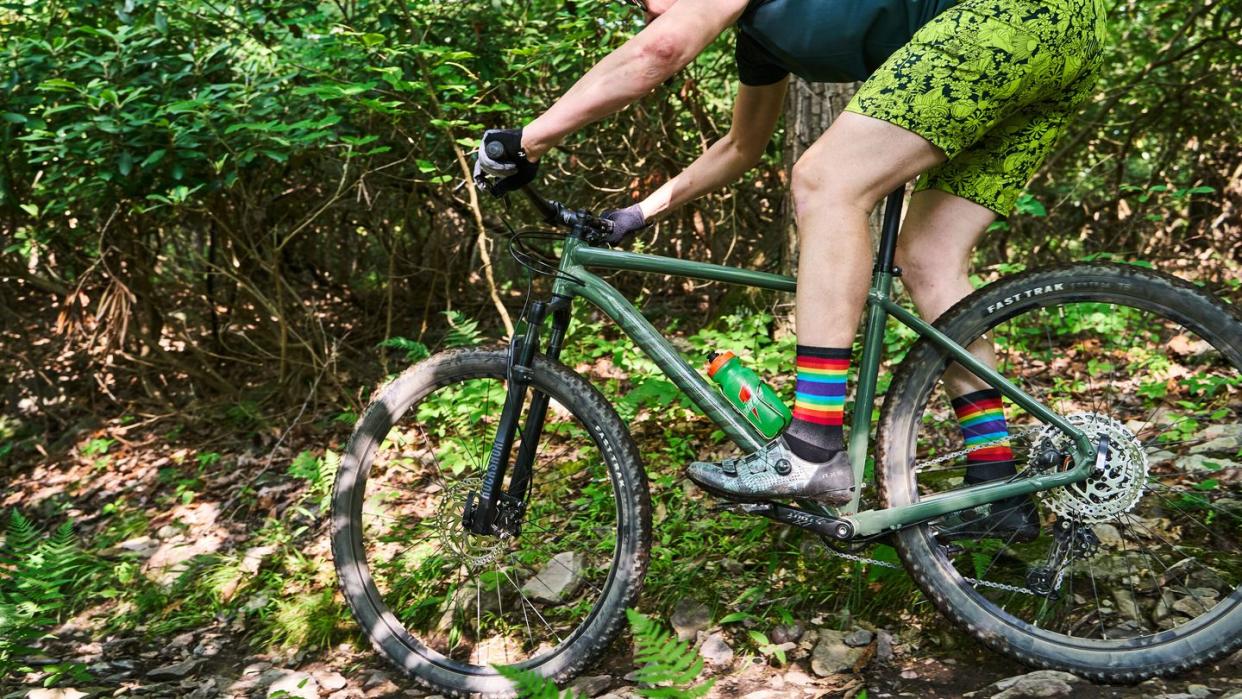
"Hearst Magazines and Yahoo may earn commission or revenue on some items through these links."
New trails and bike parks, improved bike geometry and components, and televised mountain bike events are making mountain biking more popular than ever. It's no wonder why so many riders want to hop on an MTB and hit their local trails.
The upfront cost of these bikes can feel overwhelming but affordable options exist for newcomers who want to dabble in a dirty ride. Whether it’s a full-suspension downhill shred machine or a hardtail cross-country bike, budget-friendly mountain bikes are abundant. Many brands offer at least one (if not many) affordable mountain bikes in their lineup. Here are some of the best mountain bikes under $2,000.
Best Cheap Mountain Bikes
Lightweight and Balanced: Specialized Rockhopper Elite 29
Best Aggressive Hardtail: Vitus Sentier 29
Most Dependable Choice: Trek Marlin 7 Gen 3
Best Value Hardtail: Giant Talon 29 1
Best Value Full Suspension: Marin Rift Zone 1
Solid Value Hardtail: Rocky Mountain Growler 20
Best Beginner Trail Bike: Kona Mahuna
Best Budget Hardtail: Marin Bobcat Trail 4
Best Budget Full Suspension: Giant Stance
Great-Priced Aggressive Trail Bike: Cannondale Habit HT 2
Best Cheap Hardtail: Batch MTB Disc 29
What to Consider
[accordion id='541805c7-148d-425f-9b7b-5d92653d0ab0'][/accordion]
How We Tested
Most of these bikes were ridden by Bicycling's team of test editors. And those bikes not tested were selected based on our experience with previous models and familiarity with the bike’s components. Many factors are at play when determining which bikes are worth recommending, including value, quality of parts/components, our experience riding similar models, and how the overall package meets the needs of the intended rider.
The Expert: As a Pacific Northwest native, I grew up on the slopes of the Cascade Mountains and, not surprisingly, I’m an avid skier and, in the off-season, an experienced mountain biker and kiteboarder. I enjoy all things related to outdoor sports. As someone who didn't start mountain biking until I was an adult, I hit the ground running and have tested and ridden countless types of mountain bikes over the years. Currently, I ride a Transition Scout which has been a great full suspension, all-mountain ride; as a Washington native, I love supporting a Bellingham, Washington-based company. Most recently, my husband and I traveled to Italy to explore trails in Finale Ligure on the Italian Riviera. It’s one of the few locations in the world where the trails end at the sea. The views are just as impressive as the unique trail systems.
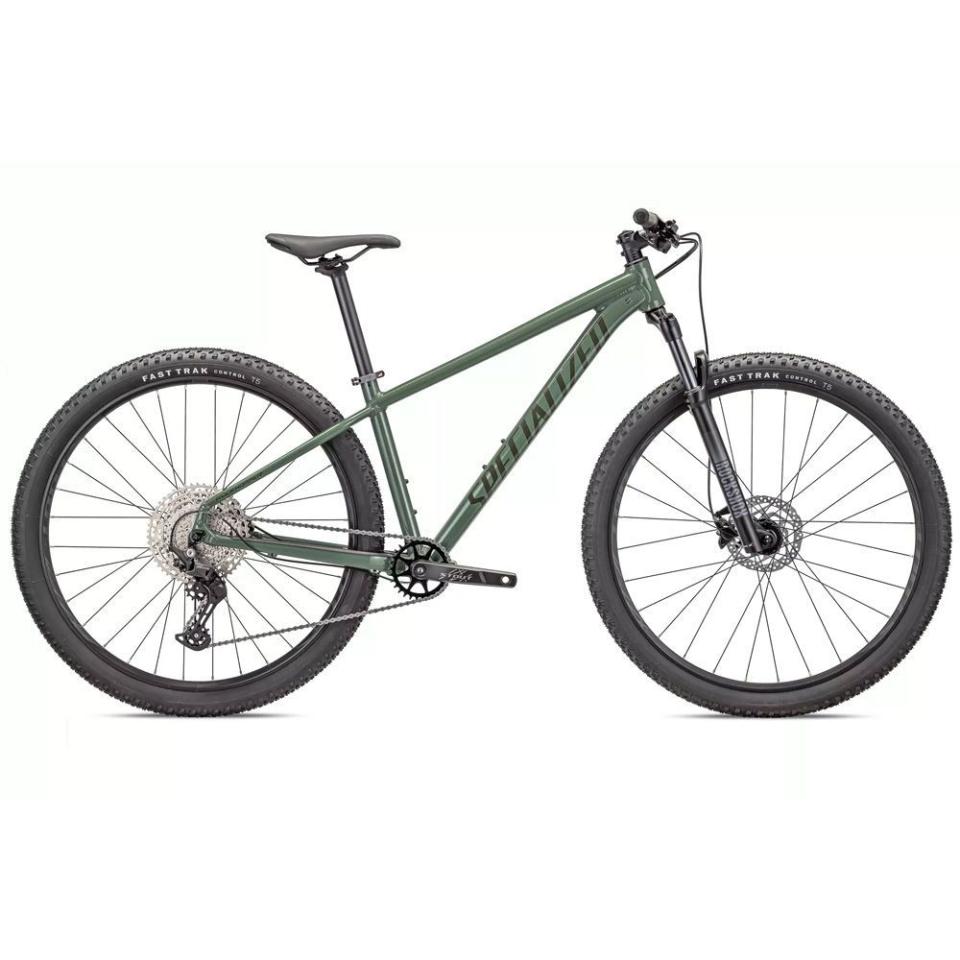
Rockhopper Elite 29
$1150.00
specialized.com
The Rockhopper has been a mainstay of Specialized’s product line longer than most mountain bikers have been alive. The brand spent decades perfecting the Rockhopper into the well-rounded mountain bike platform it is today. And that experience—paired with learnings from its World Cup-winning high-end bikes—translates into a refined quality on the trail.
The Rockhopper Elite feels like a traditional cross country mountain bike. It climbs efficiently, is quite capable on singletrack, and isn’t too nervous when descending. It does everything decently—a quality many buyers in this price range want and expect from a mountain bike.
While the Rockhopper’s frame lacks a tapered headtube and thru axle rear end, the bike strikes a modern and lightweight appearance. The frame has routing for a dropper seatpost (if you wish to add one), its cables route internally on the front triangle, and it has rack mounts.
The components on the Rockhopper Elite don’t jump out, but they also don’t let you down. The air-sprung RockShox Judy TK fork does not perform to the level of the higher-end Recon fork model (more flex under braking and harsher riding). But it is easy to set up for different weight riders and has a crown-mounted lockout for pavement sections.
The 11-speed Shimano Deore drivetrain has low gearing that helps the already light-feeling Rockhopper Elite climb quicker than the other five bikes. The Shimano MT-200 brakes with 180mm rotors were the best feeling of any of the bikes we tested.
Specialized offers a bevy of Rockhopper models between $650 and $1,400—We consider the Comp ($950), Elite, and Expert ($1,400) models most suited for trail riding use. Specialized also has 27.5-inch wheel Rockhopper variants in these models to fit shorter-height riders.
Shop Now MORE ROCKHOPPER PHOTOS
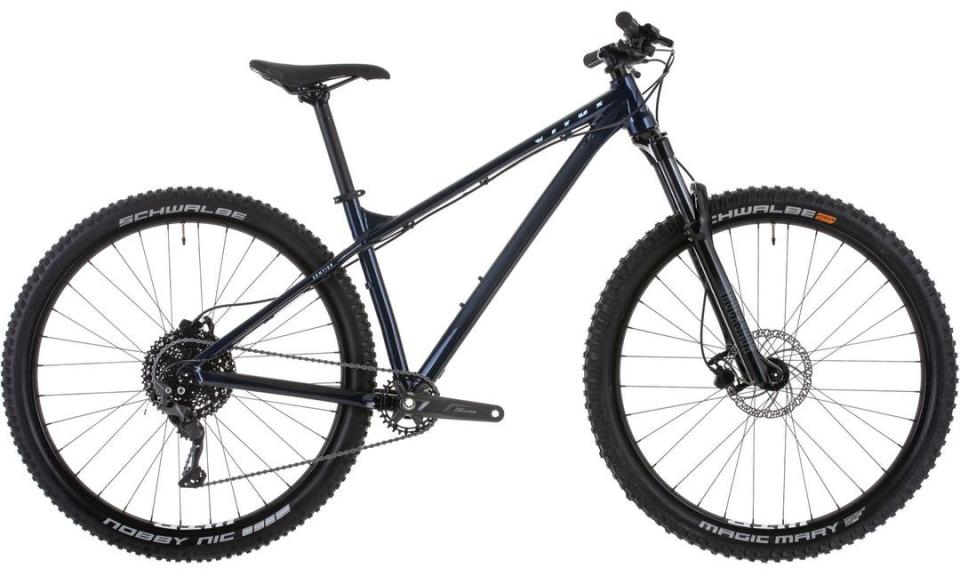
Sentier 29
$1199.00
vitusbikes.com
This bike stands for its capabilities and temperament on more technical trails. The Sentier’s combination of frame geometry and solid component selection allows it to ride faster, carry speed, and carve corners like much higher-priced trail bikes.
The Sentier’s frame boasts a slack head angle and a long top tube length. The short chainstays and low bottom bracket height aid the bike’s great handling attributes. The thru axle rear wheel provides additional stiffness when turning, and the tapered headtube adds a sense of security when going down chutes or hitting jumps.
At $1,200, the Sentier 29 is the base model of Vitus’ Sentier four-bike hardtail range. For $200 more, you get the Sentier 29 VR with an upgraded fork, dropper seatpost, better brakes, and an 11-speed drivetrain.
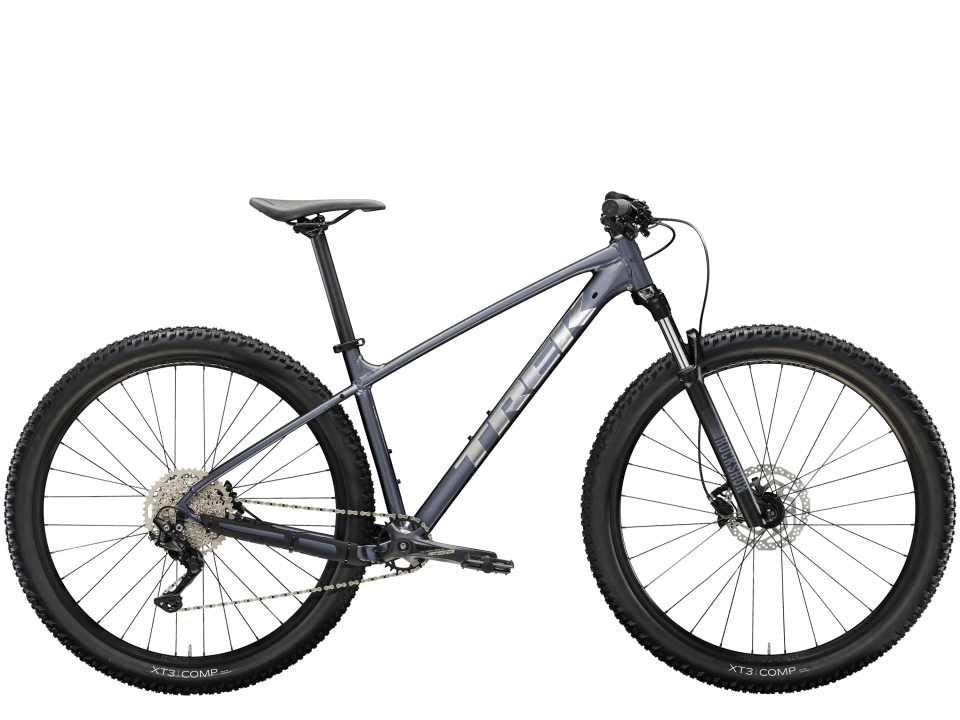
Marlin 7 Gen 3
$999.99
trekbikes.com
Trek recently launched a third generation of its long-running Marlin hardtail series. Updates to the platform increase the bike’s performance on the trail and improve your riding experience over the second-generation model.
The third-gen Marlin has a three-degree slacker head angle and a roomier top tube. And those changes were noticeable when the Marlin was on the trail. Another change to the Marlin was its max tire width, which increased to 2.4 inches. Trek used that extra space to equip the Marlin 7 with Bontrager XT3 tires. The tires are not an overly soft compound, but the extra width allowed me to improve grip by slightly dropping the tire pressure. Though the stock tires are non-tubeless, the wheels are tubeless-compatible, making an upgrade to tubeless tires easier.
The aluminum frame has a clean and contemporary look, with semi-internal cable routing, two bottle mounts, rack mounts, and dropper post compatibility. A coil-sprung RockShox Judy TK fork handles suspension duties on the Marlin 7. The fork is suitable for lighter-duty use, but the Marlin’s modern mountain bike geometry practically begs you to ride harder and faster. The Judy TK’s weaknesses come out when you push the bike hard. Due to the skinny steel stanchions and 1-⅛ inch steerer tube, I could feel the fork flex under hard braking. But it didn’t feel unsafe and will work fine for most riders.
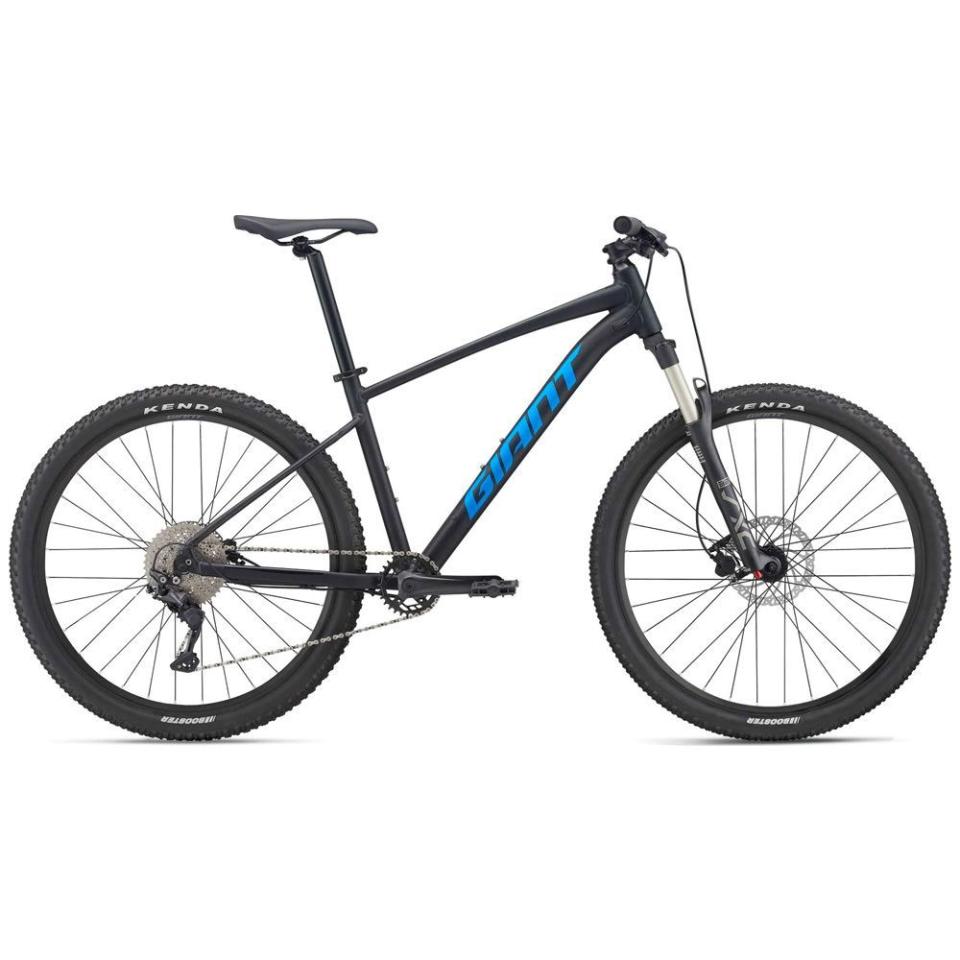
Talon 29 1
$899.99
mikesbikes.com
Appearances and first looks are often deceiving. Once on the trail, the Talon 1 surprised me with its capabilities. It rides like a bike that should cost a couple of hundred dollars more.
The Giant’s good ride feel comes down to its fork. The house-brand 100mm travel SXC-32-2 RL fork features 32mm aluminum stanchions, an alloy steerer, and an air spring. These shave weight off the bike while improving stiffness and steering precision. The fork’s rebound adjustment and air spring help you tune the fork for your weight and local trails. It is a big plus for a bike at this price.
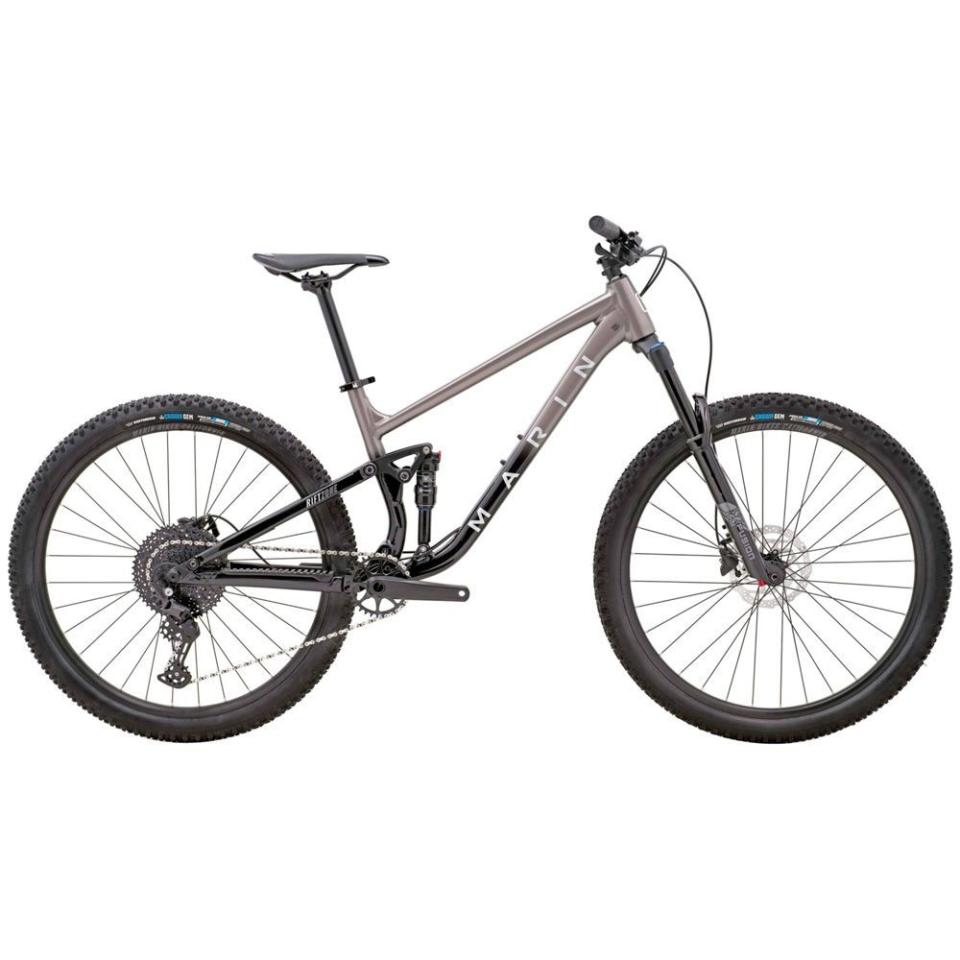
Rift Zone 1
$1799.00
jensonusa.com
The Rift Zone has 29-inch wheels, which roll over rocks and other features more efficiently and add stability as you pick up speed. With 125mm of travel, the Rift is great for trail rides, especially on technical terrain, and can even work for some light-duty racing. A 1x drivetrain, hydraulic disc brakes, and tubeless-ready wheels make the Rift Zone stand out. But those are only some of the reasons why we fell for it. Marin also got the geometry just right.
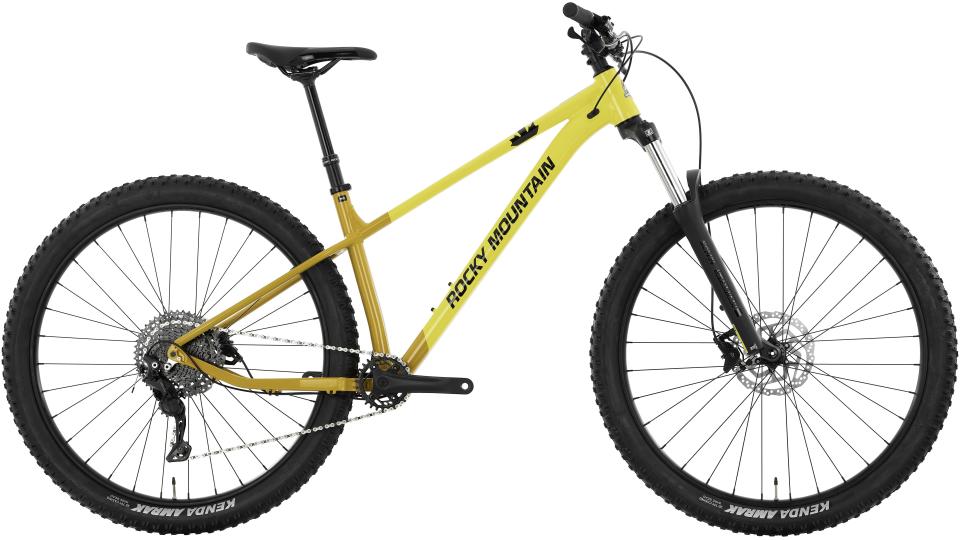
Growler 20
$1274.00
moosejaw.com
The Growler 20 isn’t flashy, extra light, or super fast. But the latest version of this utilitarian aluminum hardtail got some upgrades, including more travel in the form of a 130mm Suntour fork and 29-inch wheels. The stock rims can be set up tubeless for a smoother ride, better traction, and fewer flats when paired with the tubeless-compatible tires. A stock dropper post lets you quickly lower your saddle with the simple press of a lever. This makes climbing and downhill ripping more ergonomic and more comfortable.
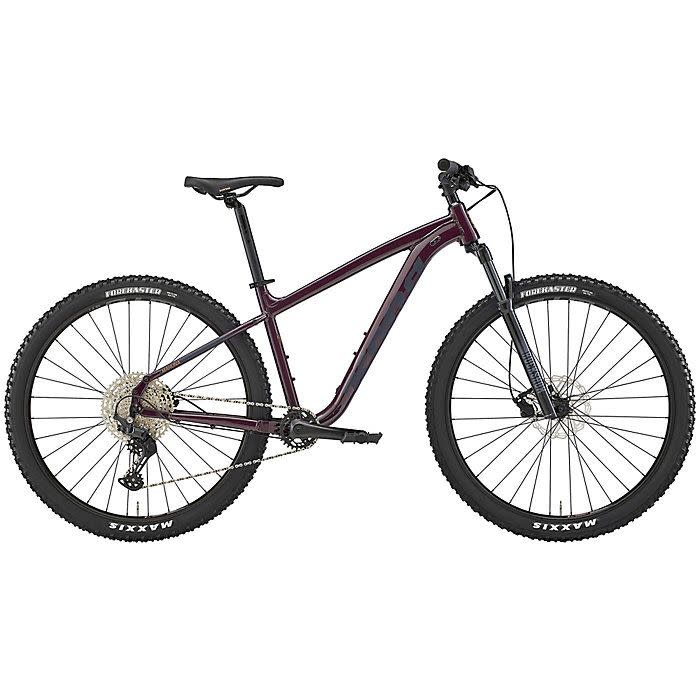
Mahuna
$959.20
moosejaw.com
For a generation of mountain bikers, the Kona name is synonymous with aggressive trail riding. Kona and a handful of other locally-based brands pioneered the type of bike capable of handling the steep, wet, and rocky terrain of British Columbia, Canada. These overbuilt bikes were more durable, often using reinforced frames, longer travel suspension forks, slack geometry, and wide tires.
The Mahuna has the appearance of a highly capable trail bike. And for the most part, it succeeds as one. The aluminum frame features a tapered headtube, routing for a dropper post, and mounts for water bottles (and racks if you wish to bikepack). And it’s painted a rich burgundy with matte-finish graphics. The bike feels ready to rip just by looking at it.
This Kona is a good choice for riders looking to get into more frequent and technical trail riding, perhaps with a side of light bikepacking. The Mahuna frame uses a tapered headtube, which makes upgrading to a better fork easier. Plus, the wheels use tubeless rims if you want to upgrade the tires.
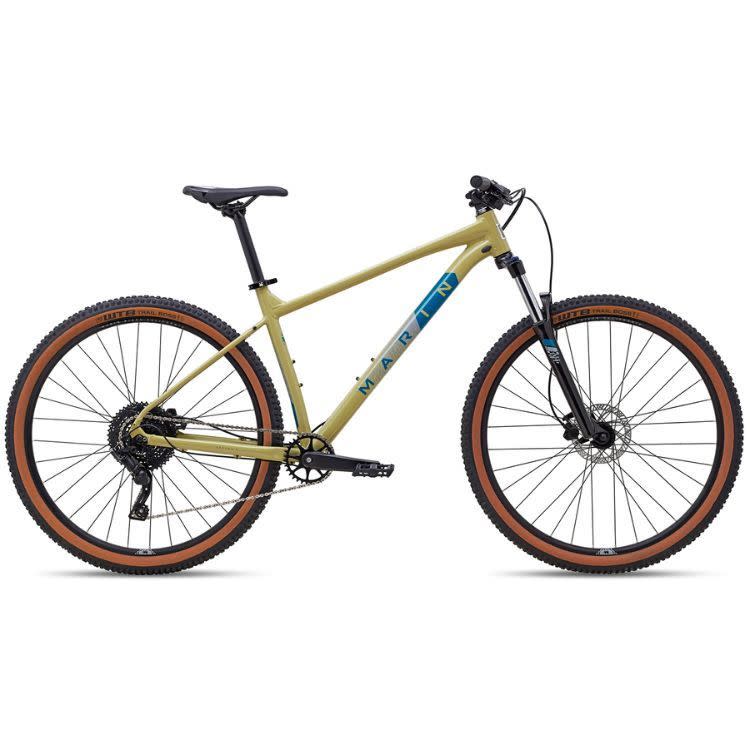
Bobcat Trail 4
$599.00
bikesonline.com
This is an excellent value hardtail with modern geometry for the more recreational rider who is looking to hit more singletrack and advance their skills. The fastback seat stay design provides a comfortable ride while still giving way to efficient power transfer. Custom wheel sizing is a perk and a size M can select between the 27.5 inch or 29-inch sizing. The Bobcat Trail 4 comes stock with WTB Trail Boss tires—known for great traction in technical terrain—making this a solid purchase for the rider who wants to advance to more aggressive singletrack. Another major bonus: this mountain bike comes with internal cable routing to add a dropper seatpost in the future.
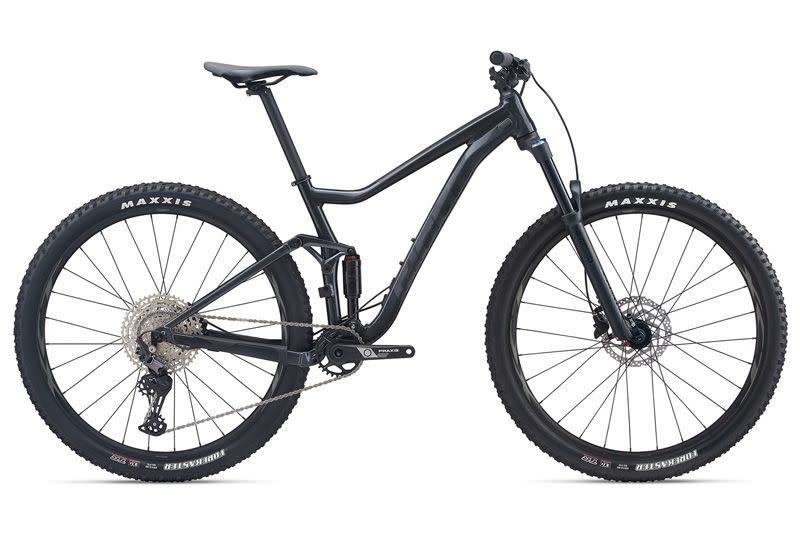
Stance
$1400.00
mikesbikes.com
The 27.5-inch wheel-equipped Stance is a solid low-cost full-suspension bike. The Aluxx aluminum frame uses a FlexPoint rear-suspension system that provides 120mm rear wheel travel. A 130mm travel SR Suntour Raidon fork smooths the bumps and a 1x10 Shimano Deore drivetrain shifts efficiently through the gears. The tubeless-ready 2.6-inch tires have lots of traction and bite hard into the trail. It’s an excellent combination: The bike rides better than you’d expect out of any $1,400 full-suspension bike, let alone those that cost far more.
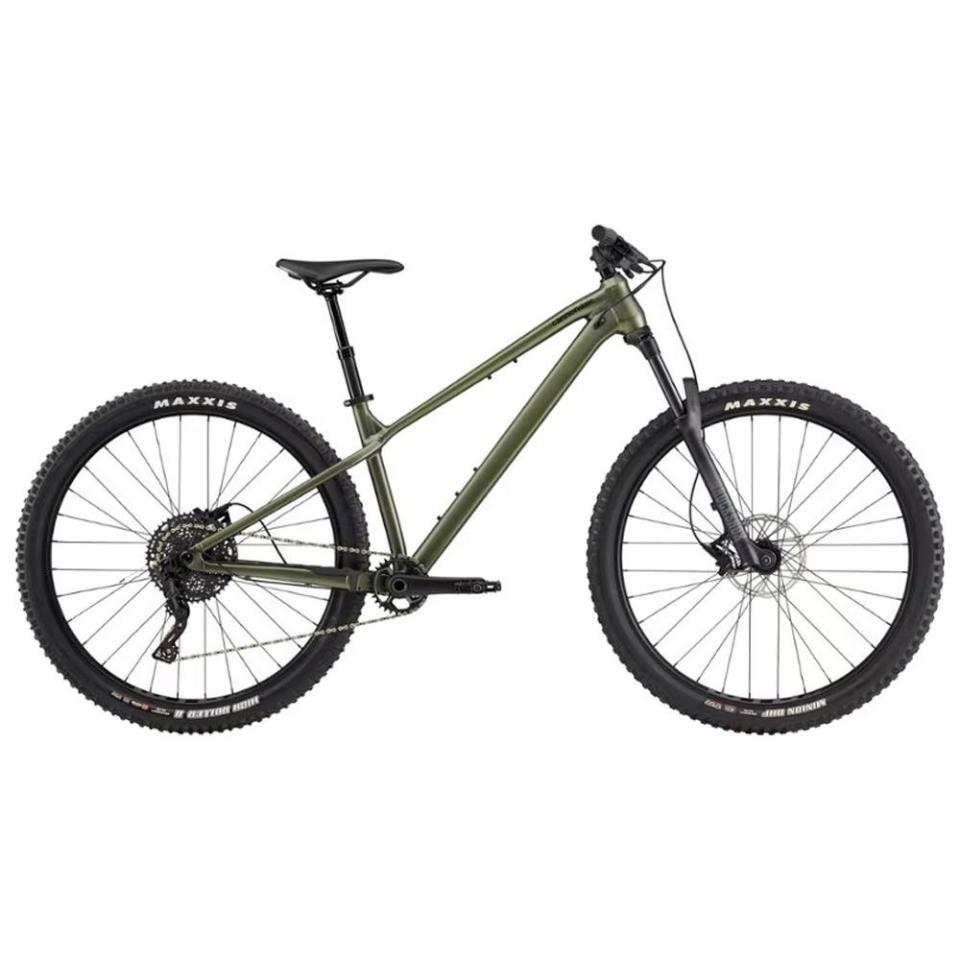
Habit HT 2
$1158.99
rei.com
Cannondale’s Habit HT 2 is a great deal for an aggressive riding trail hardtail. The Habit’s steep seat tube angle and wide-range MicroShift drivetrain help the bike on climbs. The 29-inch wheels roll smoothly over rocks and roots, with the wide tires providing extra traction. The Habit HT 2 also comes equipped with a dropper post and SRAM brakes with 180mm rotors to provide confidence when descending. The frame and fork have thru axles for added stiffness when cornering. Thru axles also allow for easy wheel upgrades or replacements down the line.
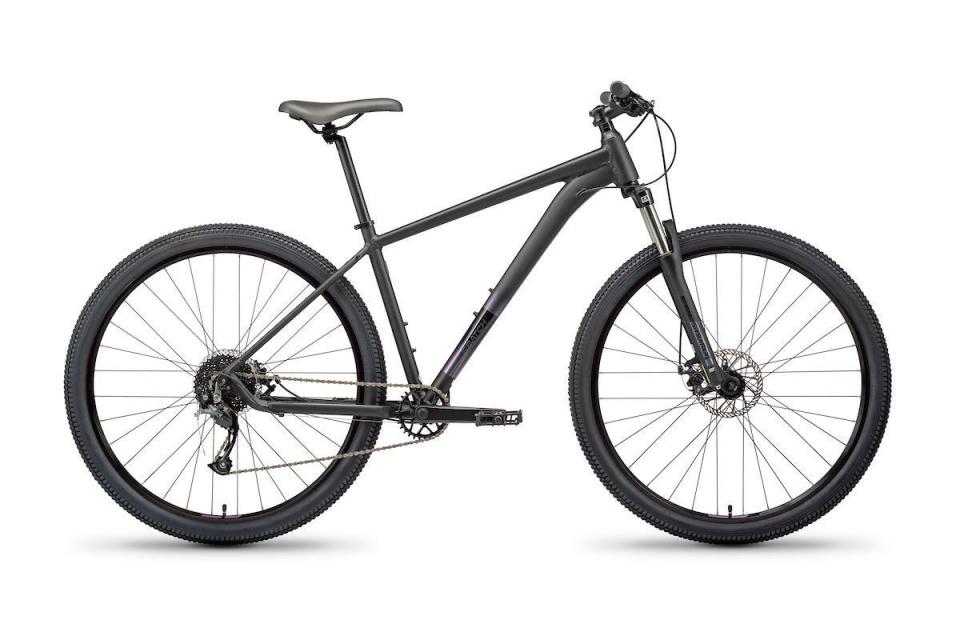
MTB Disc 29
$418.99
gearx.com
This is a great first mountain bike equipped with modern technology—front suspension, disc brakes, a lightweight aluminum frame, and 1x drivetrain. Best for flowy trails and mellow climbs, this entry-level bike won’t perform as well in aggressive, technical terrain or steep climbs but is a great value for an all-around modern mountain bike.
Expert Katy Loewy on How to Find the Right MTB for You
BI: Should I upgrade to tubeless tires?
K.L.: Some bikes we’ve recommended come stock with tubeless ready rims allowing for a quick swap to tubeless tires later on. If you've ever dealt with a pinch flat and laborious fix mid-ride, you should strongly consider upgrading to a tubeless option. A tubeless tire uses a liquid sealant instead of a tube, and with no tube there is nothing to pinch. You can also run your tires at a lower pressure which can give more overall traction to the tire as it lends to more surface area/tread of the tire in contact with the ground. If you're advancing to more technical and steep trails, you will also have an advantage with tubeless tires. If your bike is not already set up with tubeless ready rims, you'll need to purchase a new wheelset which can be pricey—which is why a tubeless ready (TR) setup is a bonus when purchasing a new bike. The flipside to this is that you will need to carry a bit more gear to handle flats in the field and that includes sealant, CO2, tire plugs, and a spare tube if required for larger holes that can't be quickly fixed.
BI: What is Boost spacing and why should I care about it?
K.L.: Boost spacing refers to the width of the front and rear axles—a "Boost" of 10mm to the front and 6mm to the rear. This addition adds more strength and rigidity to the wheels, frame, and fork resulting in an all-around sturdier bike. Historically, mountain bikes had 135mm rear and 100mm front spacing which was then replaced by 142mm rear spacing. With the adoption of 27.5-inch and 29-inch wheels becoming the standard over dated 26-inch wheels, the standard Boost spacing was born, growing to 148mm rear spacing with a 12mm rear axle and 110mm front hub spacing with a 15mm front axle. This increase resulted in more stability for bikes with bigger rims and tires. If you're looking for a mountain bike to grow with then standard boost spacing should be considered. Some manufacturers are now promoting a Super boost which increases the rear spacing to 157mm for even more stiffness and durability. For the most part, you should look for a bike with the standard 148mm rear / 110mm front spacing.
BI: Should I test ride a bike?
K.L.: Ride before you buy! And not just a casual lap around the block of your local bike shop. If you plan to invest in a new mountain bike, it's important that it meets your needs based on your size and riding style. Many bike shops offer demos for a reasonable daily rate. And in some cases, they will subtract the demo fee if you end up purchasing the bike. Take the time to get on dirt and ride a variety of trails before committing to a purchase. Another great option: Look for demo days at nearby bike parks or trail systems. This is a great way to check out a variety of brands, talk with knowledgeable reps, and demo different models.
You Might Also Like

